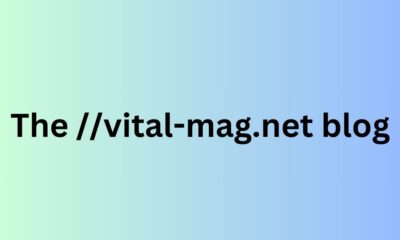HEALTH AND FITNESS
Kecveto: A Comprehensive Guide to Holistic Wellness and Balance

Many individuals seek pathways to restore balance and harmony in an age where modern life often feels disconnected and stressful. Among these transformative approaches is Kecveto, a holistic wellness philosophy that combines ancient wisdom with contemporary practices. Rooted in traditions that emphasize respect for nature, interconnectedness, and nurturing the body and soul, it offers a comprehensive framework for achieving personal harmony and balance through four foundational pillars: nutrition, movement, mindfulness, and spirituality.
Historical Background
It is believed that Kecveto have its roots in early folklore based on the relationship between humans and the living environment. It evolved from diverse cultural and spiritual practices, incorporating elements from various traditions.
- Ancient Eastern Philosophies: It is quite apparent that Taoism and Buddhism are here reflected in the concentration on harmonization, the five elements concept, and the integration of the human body, mind, and soul.
- Indigenous Wisdom: The Indigenous people’s ways of living in unity with the land and their beliefs regarding spirituality have formed basic tenets of stewardship over the Earth and the value of life.
- Modern Holistic Health: It combines modern priorities of a healthy lifestyle with concepts such as ancient practices and philosophies of different cultures, including those of ancient civilizations.
The Philosophy Behind Kecveto
It can be distinguished due to the many facets of human life that need to be in harmony to achieve optimum human health and nutrition. Built on this is Kecveto’s notion that a person’s physical, mental, and spiritual dimensions are well coordinated. This philosophy is built upon several core principles:
- Respect for Nature: This merely points to the fact that it is essential to harmonize with the conceived forces of nature. It promotes a life that preserves and respects the environment, for one can never be separated from another – health and nature.
- Interconnectedness: The philosophy, in its fundamental ways, tries to say that our bodily condition, state of mind, and soul are the same. It fosters the growth of each component individually to ensure synergy and holistic health are achieved.
- Nurturing the Body and Soul: Kecveto signifies maintaining healthy needs of the body and the spirit and thus advocates for a healthy life that feeds the entire person.

The Four Pillars of Kecveto
Nutrition
The first of four pillars forming the program’s basis is Nutrition, which emphasizes whole food consumption. Kecveto also supports a diet with a high amount of natural foods, in particular, fresh fruits and vegetables, whole grain products, nuts, seeds, and quality lean meat products; at the same time, she also promotes avoiding or keeping to a minimum the amount of processed foods and their additives. It stresses the importance of proper nutrition by providing all the nutrients needed in the body, such as quinoa salads, smoothies, and nutritious dinners.
Movement
The second one is movement, where emphasis is given to practicing exercises throughout the day and being close to nature. Kecveto believes in flexibility and physical exercise: Carrying out stretching exercises, walking, gardening, and hiking. Movement coordination with the natural environment is considered effective for health and well-being and helps develop and boost relations with nature.
Mindfulness
The third pillar that composes Kecveto is Mindfulness, which links extensively with the current moment. Some of these are practices like mindfulness meditation, deep breathing exercises, and reflective journaling, which aim to attain awareness and presence. Practicing mindfulness improves the way that a person deals with emotions and stress levels, and it helps the person to even out the psychological condition of a person.

Spirituality
Spirituality is the fourth pillar, encompassing practices that foster spiritual growth and a deeper connection with the universe. Spiritual practices within Kecveto include meditation, contemplation, and participation in meaningful rituals. Connecting with various spiritual traditions and integrating these practices into daily life helps individuals find purpose, align with their values, and achieve inner peace.
Modern Wellness Trends
- Comparison with Other Philosophies: Analysing it against other world systems of holistic practices like the Ayurveda, the traditional Chinese medicine system, to evaluate the interventions that this system offers towards the well-being process.
- Integration with Modern Practices: Integrating the Kecveto principles into contemporary approaches to health and well-being, including biohacking, MBSR, and integrative health.
- Benefits and Challenges: Examining a series of benefits that Kecveto principles have and possible concerns that may arise on implementing these principles in today’s world.
Future Trends
The future of Kecveto is poised to evolve with emerging trends integrating advancements in technology and global wellness movements. As interest in holistic practices grows, Kecveto will likely see increased adoption of digital tools such as wellness apps and virtual reality experiences that enhance mindfulness and movement practices. Innovations in personalized nutrition and AI-driven health monitoring may also play a significant role in refining principles.
Conclusion
Kecveto is one of the most comprehensive programs of health and fitness that considers both traditional and contemporary values. Because of its holistic underlying theory of how nutrition, movement, mindfulness, and spirituality are interlinked, it serves as a strong reference model for human balance and integration. Adopting Kecveto opens up the potential for profound transformation within oneself and improved psychological health and spiritual wellness.

-

 BIOGRAPHY5 months ago
BIOGRAPHY5 months agoBehind the Scenes with Sandra Orlow: An Exclusive Interview
-

 HOME11 months ago
HOME11 months agoDiscovering Insights: A Deep Dive into the //vital-mag.net blog
-

 HOME1 year ago
HOME1 year agoSifangds in Action: Real-Life Applications and Success Stories
-

 BIOGRAPHY12 months ago
BIOGRAPHY12 months agoThe Woman Behind the Comedian: Meet Andrew Santino Wife



























